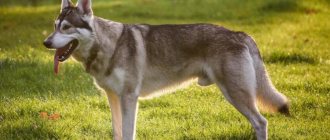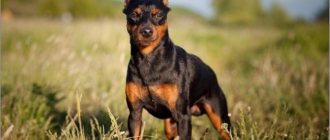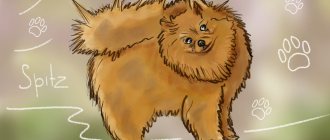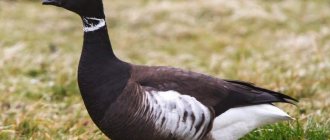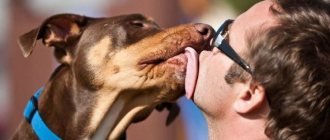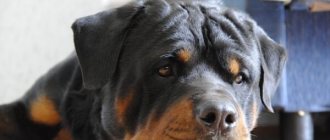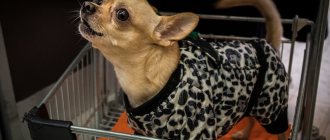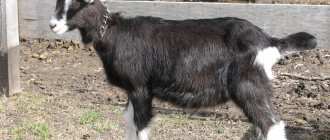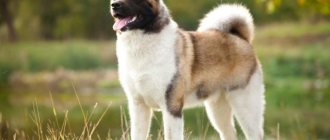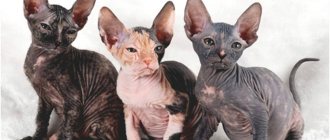Why do we love wolves? There are many reasons that can explain our mysterious love for these wild animals, from their appearance to their temperament.
The vast majority of dog owners have thought at least once about owning a wolf and how it would affect their lives. Some even purchased real wolves.
However, it is not necessary to have a real wolf. There are breeds that closely resemble wolves and can easily be mistaken for a wolf if encountered in the wild.
These breeds share some characteristics with their wolf ancestors, such as heightened senses, heightened intelligence, and a fairly aggressive temperament.
Wolfdog of Saarloos
This breed is the result of crossing a German Shepherd with a wolf. The Saarloos wolf dog is indeed remarkably similar to a wolf and has predominant wolf instincts.
Saarloos dogs live according to the law of the pack; they are characterized by independence, but at the same time, affection for the owner. They are characterized by sudden changes in mood, from calm to suddenly aggressive.
Norwegian Elkhound
This dog belongs to the group of hounds. Representatives of the breed are similar to wolves with pointed ears, dense hair, an elongated muzzle, and a strong character. These animals have been known to people since ancient times. They accompanied the Vikings on their sea voyages. The tail curled behind the back is the only feature of the Norwegian Elkhound's appearance that distinguishes it from a wolf.
Aquarius - listen to intuition: forecast for all signs for the spring equinox
Serebryakov returned to Russia. Shukshina believes that he should not have left
Capricorn and 3 other zodiac signs whose glass is always half empty
Utonagan
This very wolf-like breed was actually developed without the use of real wolves. Utonagans are bred in England and were created from the Alaskan Malamute, Siberian Husky and German Shepherd.
Unlike other wolf counterparts, Utonagans are calmer, affectionate and sociable dogs. The only thing that makes us think of them as wolves is their color and head shape.
Breeds with close similarities to wolves in various characteristics
Dogs that resemble a wolf have different traits in common. For some it is only appearance, for others the similarity manifests itself at the genetic level. And there are even hybrids - when a domesticated animal is crossed with a wild animal.
Yulan Wolfdog
Another name for the breed is Yulan Wolfhound. These are excellent mounts, adapted for working in northern regions with their long winters.
They make good pets. The dog's body shape is almost square, and the height at the withers is 60-70 cm. The presence of wolf DNA in the blood of Yulans is 12-25%. At the same time, pets make good contact with people and are easy to train.
Yulan Wolfhund or Yulan Wolfdog
Siberian Husky
Dogs of this breed are smart and resilient, and they also have a hunting instinct. They were given piercing blue eyes by nature. At the same time, these pets are not suitable for security work. For people leading an active lifestyle, the Husky will be a good companion, since it is important for her to develop not only her muscles, but also her mind. Siberian Huskies can be bred by all residents of central Russia or northern Russia.
Alaskan Malamute
This is a large dog with good driving qualities, bred by the Eskimos to use such manpower in the conditions of the extreme north. The Malamute, like the dingo, is an ancient breed and has the closest resemblance to a wolf. The pet simply needs constant physical activity, including long walks. These dogs are distinguished by their affection for the family and love children. As for training, the dog needs a “steady hand”, and caring for them is not difficult. In addition, they are clean and eat little.
Interesting feature! Alaskan Malamutes tend to dig large holes due to their animal instinct to look for food in the ground.
Wolfdog of Saarloos
A cross between a she-wolf and a male German Shepherd that lives in the forests of Canada. Such an experiment was carried out in 1925 by the Dutch breeder Lander Sarloos. After 56 years, the Dutch Kennel Club recognized the existence of a new breed. Despite the obvious resemblance to a wolf, the pet is loyal to its owner and can be trained. In Holland, as well as some other countries, these dogs serve as guide dogs for blind people and as rescuers in extreme situations.
Czechoslovakian Wolfdog (Czechoslovakian Wolfdog)
This breed is the fruit of experiments conducted in the 50s of the last century. German shepherds crossed with Carpathian wolves. The Czech government planned to create animals that would have good endurance and could be easily trained for the needs of the army.
The hybrids that emerged met all the requirements, but they were not widely used among the troops. The Czechoslovakian breed began to be used for other purposes - search work, rescue operations, guard duties (livestock protection).
Appearance of the Czechoslovakian Wolfdog
Amerind Malamute (Kugsha)
A powerful dog with strong and long legs. Thanks to this physique, she is able to cover long distances. The domestication of these dogs to domestic conditions occurred not so long ago. These pets are loyal to people, but for families with small children such a neighborhood is undesirable.
Canadian Eskimo dog
This breed can also be included in the list of ancient representatives. Animals are able to adapt to the coldest and most difficult conditions that can be encountered on planet Earth. According to various sources, the breed is more than 1,000 years old. But today it is difficult to find a purebred Eskimo.
Note! Some dogs retain the habits of their wild relatives - overcoming fences, walking on the roofs of buildings, but with each subsequent litter these instincts are lost.
Close relatives of this breed include the Greenland dog and the Alaskan Malamute. At the same time, they can sleep in the snow and work in extreme cold conditions - down to -50 degrees and are not in any danger of hypothermia. This endurance is ensured by thick fur with fatty lubricant.
Russian Wolfhund
These are sports sled dogs with a color closer to black, which are suitable for long-distance competitions. They are able to distinguish odors, and after training they can recognize explosives and narcotics, which is why they are used for search and rescue services. Already from early childhood, Wolfhounds show dedication and devotion to their owners.
Greenland dog
Another variety of the ancient breed, which was officially recognized in 1997. This is a large animal with well-developed muscles. Height at the withers usually varies from 60 to 62 cm, and weight is 33 kg. The dogs are distinguished by good health and a strong hunting instinct.
The Greenland sled dog is one of the ancient representatives of the breed
The dog's ability to carry very heavy loads, as well as to withstand adverse weather conditions, makes it a valuable find for the Arctic regions. Sometimes the dogs are called Eskimo huskies.
Tamaskan dog
It is the result of crossing a Siberian Husky, an Alaskan Malamute and a German Shepherd. The result is a dog that is great with children. At the same time, the Tamaskans retained the working qualities and endurance of their ancestors.
Northern Inuit dog
When creating this breed, as in the case of the Utonagan, wolves were not used. The breed was originally developed in Canada and then brought to the UK. It was created using a German shepherd, a Siberian husky and several breeds of Inuit dogs.
Despite its wild appearance, the Northern Inuit dog is absolutely not aggressive. On the contrary, she is friendly and loves to play with people.
However, these dogs have a huge disadvantage. They should be trained from an early age and the learning should never stop. This is due to their stubborn and capricious nature.
Features of wolfdogs
Wolf dogs are powerful, beautiful, extremely intelligent and highly intelligent animals.
Positive behavioral characteristics and character traits include the following:
- High level of mental abilities, and, as a result, good learning ability . Animals are smart, quickly and correctly grasp the meaning of commands. It is recommended to involve professional dog handlers with extensive experience working with service dogs in training and education.
- Excellent performance characteristics - the instinct inherited from the “wild” ancestor allows you to brilliantly perform a variety of search, investigative and security tasks.
- Devotion, obedience - with a properly constructed education system. Mixed breeds must be included in the hierarchical human-dog social system from birth. In this case, problems with discipline and submission to the owner will not arise.
- Unpretentiousness in food , the ability to go without food for a long time, the absence of special conditions for keeping a wolf-dog. The best option is an open space with the possibility of free walking. As a place to rest and sleep, a spacious enclosure with an insulated floor is enough to provide shelter from heavy rain, piercing winds and severe frost. The enclosure or canopy must be located away from drafts and direct sunlight.
- No special requirements for caring for wolfdogs . So, the coat is combed once a month, and to maintain cleanliness it is enough to bathe your pet only 2 times a year. Other procedures, such as cleaning the eyes, ears, and examining the teeth, are carried out once every 7-10 days. Wolfdogs' claws usually do not require trimming, as they wear down naturally.
- Excellent health . For example, it is noted that wolf dogs are not susceptible to many diseases characteristic of large dogs - joint dysplasia, diseases of the digestive system. Representatives of this breed are considered long-livers - life expectancy often exceeds 20 years.
But these animals also have unfavorable traits that the future owner must keep in mind:
- Animals have a pronounced desire for dominance. For this reason, they are absolutely not suitable for people with a soft, pliable character. The feeling of belonging to the “pack” is preserved in this type of dog for a very long time, and it is important for wolf-dogs to have a leader to whom they obey unquestioningly. The owner's leadership qualities are the key to a successful relationship with the pet.
- It is not recommended for inexperienced owners who have no experience in communicating, raising and training large service-class dogs to have a wolf-dog.
- Not suitable for keeping in an apartment (only real wolf-dogs are not suitable).
- It is forbidden to put wolf-dogs on a chain . This often leads to aggression, including towards the owner and members of his family.
- Doesn't get along well with other animals.
Canadian Eskimo dog
The Canadian Eskimo Dog, also known as the Canadian Husky or Canadian Inuit Dog, closely resembles the American wolf.
This breed is extremely rare. In 2008, there were no more than 300 individuals and at the moment the breed is considered to be on the verge of extinction.
As for character, the owners describe the Eskimo dog as an agile, resilient, very strong and at the same time friendly dog.
Socialization, training, training
The main rule that should be followed when raising and training a wolf dog is the formation of a relationship built on respect and trust between the animal and the person. Despite their origin, wolfdogs are characterized by devotion, which motivates them to follow commands and make concessions in the process of their socialization.
It is useless and unsafe to try to influence a wolf-dog with rude orders or violent actions: these are animals full of strength and dignity, the blood of a wild beast flows in them, so any open aggression can be similarly returned.
It is necessary to start training a wolf-dog from an early age. You will be lucky if a person is the owner of a third or fourth generation hybrid: they already have more “domestication”, while the first generation is more wild and willful.
What is a wolfdog capable of?
Wolf dogs, as already noted, are distinguished by more developed natural qualities: endurance, hearing and smell, strength and intelligence than ordinary dogs. Therefore, their removal was beneficial for special services, search groups, and combat units. It is not the easiest task to train a wolf dog to work for a person in this way, so training is not complete without a professional dog handler.
Many dogs serve in the army
Attention! Getting a wolf-dog instead of a watchdog is not the best idea.
This hybrid of a dog and a wolf is distinguished by calmness, intelligence, as well as cowardice and modesty. And most likely, such a “defender” will howl, not bark, during a meeting with a thief.
Tamaskan dog
When it comes to wolf-like breeds, this dog is clearly superior to all others. She looks incredibly like a wolf.
The Tamaskan dog was developed in Finland and, unfortunately, is not a generally recognized breed due to its small numbers (there are just over 400 individuals currently in existence).
Tamaskans are taller than German Shepherds, larger than Huskies, and much stronger than both. They are friendly, obedient and accepting of other pets.
Belgian Malinois
The coat of such dogs usually has a brown tint. However, in general they are very similar to wolves. Belgian Malinois are active pets. They love to run and play outdoors.
Haircuts were not Aunt Tanya’s thing: Menshova remembered her first “stylist”
“Don’t divide yourself into parts”: Tina Kandelaki on how to find your man
They wanted to clear the roof of snow and almost ended up under it: video
Siberian Husky
I just had to add the Siberian Husky to this list. This dog definitely looks like a wolf, has great strength and stamina, but most importantly, it has the pack mentality of a wolf.
At the same time, huskies are not ideal for keeping a dog in an apartment or small house, because they have a lot of energy and get bored very quickly.
And when they get bored, they will do everything in their power to have fun at your expense.
Is it worth getting a breed that looks like a wolf?
It can be tempting to choose a dog that looks like a wolf from the wild forest. However, think about why you need a dog that looks like a wolf. Are you prepared for your dog's temperament and training? Many of the breeds that are most similar to wolves have strong personalities and can require serious work.
Although such a dog may look great, remember that you are entering into a long-term relationship. Choose a dog based on personality and your ability to work together. If it's a wolf puppy, make sure you give it good obedience training and how to work together. Starting early will ensure that your furry friend recognizes you as a leader.
Add a comment
Alaskan Malamute
The Alaskan Malamute is another wolf-like dog that is distantly related to the Siberian Husky. They have the same temperament, coat color and are both used in sled dogs, but that's where the similarities end because the Malamute is a husky on steroids.
In fact, the Malamute is taller and much larger and stronger than the Siberian Husky and is almost equal in strength to the wolf. This is a kind, but at the same time strong-willed and stubborn dog that requires daily training.
Shiba Inu
Representatives of the breed are small or medium in size. They have short fur, which consists of two layers. The Shiba Inu's fur is brown, red, cream or black. These dogs are distinguished by a strong, muscular physique and good-natured disposition. They have been known to the people of Japan since ancient times. In this country, Shiba Inus are especially revered. Representatives of the breed have a curved tail, but many of the features of such dogs resemble those of a wolf. Shiba Inus are similar to their wild relatives in the shape of their muzzle and ears.
Kugsha
Kugsha is one of the breeds very similar to wolves, which has all the features, including character, of a wolf. This is due to the fact that the kugsha is not quite a dog, but a real wolf.
Coons were only recently domesticated in the United States, given the title of dog instead of wolf, but they have managed to become loving, eager-to-please dogs.
Unlike other breeds, the Kugsha always works with its owner. However, she still remains an intelligent and strong-willed dog who will certainly challenge her owner if she finds such an opportunity.
Care and maintenance of a wolf-dog
In general, the characteristics of this animal are dominated by positive features, but there are also some nuances that are worth listening to: There
should not even be any talk about keeping this hybrid in a small apartment. A dog is comfortable in a large house, with a fenced area, in an enclosure or a cozy kennel. It can be used as an entrance to your home, but it is preferable to keep it closer to the street.
Keeping another pet with this hybrid is highly undesirable.
Under no circumstances should he be chained. Such actions lead to the fact that over time the dog becomes as if mad and loses control over itself. In addition, the dog on the chain howls endlessly.
Wolfdog is suitable for people with leadership abilities. A dog does not take a person with a soft character seriously.
A large and open space is the most important thing for good growth and normal mood of the animal. Although the dog is quite hardy, it must be provided with housing in which there are no drafts.
It is important that they have the opportunity to hide from the scorching sun in the shade and from winter frosts. A high fence is required
It is enough to provide the dog with water and food in a timely manner and periodically comb its fur, as well as monitor the condition of the eyes and ears.
Czechoslovakian Wolfdog
Czechoslovakian Wolfdogs were originally created from an experiment in which 50 German Shepherds were crossed with 4 Carpathian wolves.
The purpose of the experiment was to try to create a dog breed that would take the best of both worlds: the trainability, intelligence and temperament of the German Shepherd, and the speed, strength, agility and endurance of the ruthless Carpathian wolf.
The experiment was declared a success, although the goals were not achieved. Indeed, the dog gained the characteristics of a German Shepherd and the stamina of a wolf, but it still had wolf-like habits, such as avoiding people and frequently growling for no apparent reason.
Advantages and disadvantages of breeds
A dog that looks like a fox with short legs: breed
Crossbreeds bred under the supervision of scientists have the best traits of wolves and dogs. Advantages of wolfdogs:
- These are physically developed creatures with a strong body, strong skeleton and muscles.
- Height – 60-70 cm, weight up to 50 kg – a good indicator for the breed.
- Individuals are distinguished by their long life - more than 20 years.
- Bite and jaw clenching strength are above average.
- Animals are characterized by quick reactions.
- Intelligence and acumen are superior to those of a dog.
- The sense of smell is like that of a wolf - 5 times higher than that of a domestic pet.
- A wolf dog prefers one owner and does not betray its affections.
Metis are active and curious animals. A disadvantage that breeders have not yet dealt with is the manifestation of aggression by wolf-dogs. This quality is regulated by the amount of wolf blood. At the moment, scientists allow it to be no more than 25%.
Wolfops or wolf-dogs are a breed of dog bred through selective breeding. They are sometimes mistakenly called a hybrid. It involves crossing two different species. And dogs are a subspecies of the wolf, so it would be more correct to talk about a completely new breed.
Experiments have been carried out for a long time. Successful selection resulted in breeds that are accepted and described by cynological organizations. Breed standards have been determined and representatives are allowed to participate in exhibitions and competitions. Some breeds are not yet recognized by dog handlers. It is not worth purchasing such pets for apartment living.
Wolf dogs are organized animals. They are careful and smart, strong and resilient. Wolfops have a good sense of smell and remember more smells. Scientists claim that dogs mixed with wolves are able to distinguish healthy human blood from cancerous ones.
